The scope of activities considered is wide, from Abseiling to Zip-wires. By their very nature, these activities are often inherently dangerous. This Guide does not consider risks associated with observational filming of adventure activities and competitive sports not under our control, nor the capture and use of content provided by others, nor to stunts.
What Can Go Wrong?
- The hazards are many and varied and will depend on the activity undertaken, but could result in traumatic impacts, abrasions, cuts, drowning, altitude sickness
- Participants may be challenged physically, including becoming exhausted, strain muscles and tendons, suffer heat or cold stress, become dehydrated
- Participants may be challenged psychologically, possibly trying to overcome deep-rooted anxieties, including fear of injury and fear of failure.
Legal/91�ȱ� Requirements
- Adventure Activity Centres and Companies which provide caving, climbing, trekking and watersport activities for children and young persons are required by law to hold a licence issued by the Adventure Activity Licensing Authority (AALA)
- Though not legally binding, those UK companies who provide adventure activities overseas should be aware of and working to BS8848.
Control Measures
Scoping the activity
Whilst editorial considerations will often determine the adventure activity to be filmed, and possibly also its location, the production need consider:
- Matching risks to participant capability - this safety critical decision needs to be agreed between the Instructor of the activity, the participant and the production ahead of the activity taking place. They need consider the risk factors involved, including the scale / difficulty of the challenge, the capabilities and fitness of the participant (see more below), the ability to arrange prior training / practice, the likely conditions on the day, etc.
- Choose a suitable location – if not chosen by your Instructor, confirm that it allows them to monitor and keep control over the activity, and to render assistance / perform rescues as required. Check if any particular conditions are required for safety which could affect scheduling (e.g. weather, state of tide, daylight length, etc.) or whether any the location needs prior preparation (e.g. provision of anchor points, closure to members of the public, etc.).
- Determine equipment to be used – check any equipment required for safety will be provided (if not by the Instructor, then who?) and that this meets relevant safety standards and/or risk assessment requirements – your Instructor should advise (see also our Safety Shorts guides in the Useful Documents section of our Rope Access Techniques Guildeline). Check that any personal protective equipment fits the participants. Check what clothing needs to be worn and that the participant has these.
Appointing a suitable Instructor
There must be someone in charge of the activity who understands the risks involved and how to manage them. The Instructor will be in charge and will have the final word on safety.
- Competence – this can be demonstrated in many ways, though for most sports and adventure activities recognised by Sport England, there will be a National Governing Body (NGB) or Association which, through their own Codes of Conduct / Rules, will define the competence required for those who instruct others, typically through their own qualification or award schemes. Check these are being met. Wherever possible, engage the most experienced / senior Instructor you can get. Competence can also be demonstrated through success in professional level competition, though be mindful that they may not be experienced in instructing novices and may not hold appropriate insurance (see more below). If in doubt, speak with your Safety Adviser.
- Adventure Centre licensing – within the UK, adventure activity centres which provide caving, climbing, trekking and watersport activities for children and young persons are required by law to hold a licence issued by the Adventure Activity Licensing Authority (AALA). If you are proposing one of these activities, check that your adventure activity provider holds this licence and it is in date, even if children aren’t involved in your production, because it assures you that their safety management procedures have already been vetted by a competent person.
- Risk assessments – ask for a risk assessment from your Instructor. Check that this considers your particular filming activities and that you, and your participants, are able to comply with any requirements it stipulates (e.g. obtaining prior training, confirmation of fitness / health). Check that the risk assessment considers emergency / rescue situations and first aid arrangements – it should be clear where responsibility for provision of these rests.
- Experience of productions – not essential for safety, but it can be very helpful if the Instructor has worked with TV productions before as this often helps them to anticipate issues often associated with filming / recording.
- Insurance – your activity provider must hold appropriate levels of professional and public liability insurance. Seek confirmation of the cover provided (check with 91�ȱ� Insurance the levels required). Many adventure activity providers require participants to sign waiver forms / medical self-declaration forms – before doing so, obtain copies and have the wording checked by 91�ȱ� Insurance and your Safety Adviser, as it is not unknown for some providers to try to abrogate themselves for any liability due to negligence on their part.
Assessing fitness of a participant
Whilst the risks from the activity may be known, we also need to know whether those involved have any health condition or pre-existing injury which could predispose them to further injury or illness, and decide whether we want to go ahead with the activity as planned.
- Fitness of contributor – the activity may place significant demands on their physical health and/or mental wellbeing (e.g. extreme physical exercise, confronting frightening situations, etc.). Proportionate to the level of challenge, we need to check their current state of fitness and health to help us determine whether or not they will likely cope with the demands from the activity - see 91�ȱ�'s 'Fitness to participate' guidance.
- Fitness of others / crew – those under contract to the 91�ȱ�, or who are freelance / sole traders / contractors will, through contract, present themselves as fit for the work for which they are engaged. However, whilst in most cases they won’t be carrying out the extreme activity being filmed, there may be times when production team members are exposed to extreme challenges (e.g. altitude, weather extremes, arduous trekking, etc.) which could present significant risks to their health and/or well-being, particularly if they have an underlying health condition not known to us. In such situations, the challenge involved should be highlighted at the beginning of the interview process to give them the opportunity to declare that they are 'fit to participate' prior to engagement.
Communication and consent
Participants need to have a good idea of what they’re letting themselves in for so that they can give informed consent to taking part.
- Production risk assessment – this need bring together all of the requirements covered by this Guide, and be provided to each of those involved in order that they can review it, confirm understanding and agree to abide by its findings. They also need to give their written consent to taking part. For children, the risk assessment must go to their parent, designated guardian or their school in order that the consent may be informed. Those involved should be given sufficient time to review the risk assessment findings.
Managing the activity on location
All the preparation is done, so now it’s making it all go to plan.
- Safety briefings – your Instructor should give a safety briefing to participants prior to the activity taking place, reminding and reinforcing important safety measures. Producers should also brief participants (and crew) in relation to confirming consent, ‘pressure to perform’ issues (see below) and any last minute changes to the risk assessment.
- Condition of participant – check that the participant is fit and well enough to take part on the day, both physically and mentally.
- Pressure to perform – it is not unknown for a participant in adventure activities to change their mind at the last minute, usually due to fear of injury or failure when confronted by the situation. Good Instructors will be familiar with this and will know when and how to encourage participation and when not – the production must not put undue pressure on participants to ‘perform’, regardless of the time, trouble and effort made to get to that point. Risk of accidents increases when a participant isn't able to give it their full attention.
- Safety monitoring – check that all of the safety precautions identified in risk assessments (both by the Instructor and the Producer) have been put in place. Pay particular attention to safety critical areas, like Instructor to participant ratios, provision and wearing of personal protective equipment, safety briefings, arrangements for rescue and first aid, and any last minute changes.
Filming methods
- Check if your crew can film / record from a safe position, additional precautions may be required - see 91�ȱ� Rope Access guidance.
- If mini-cameras are to be mounted on participants or their equipment, read the article on Helmet-Cams (see Recommended Links) and check with your Instructor that these won’t compromise safety.
- If using drones or remote / locked-off cameras, check that these won’t present significant risks to participants or others, including spectators or members of the public - see 91�ȱ� UAV guidance.
Division Specific Issues
- No Division specific issues.
FAQs/Did You Know?
- Within the UK, Sport England lists all of the National Governing Bodies (NGB) they recognise on their website - good for checking membership and competency requirements.
- The AALA is currently the Health & Safety Executive, although they outsource the work of licensing to the Adventure Activity Licensing Service (AALS), currently delivered by TQS Ltd. Licensing was set up in response to the Lyme Bay tragedy in March 1993.
Recommended links
- [Gateway] UAV Preferred Suppliers, insurance, etc.
- Free leaflet summarising the main requirements of BS8848
Adventure Activities topics
 Contributor's Fitness to ParticipateA guide to the health of contributors performing physically demanding tasks
Contributor's Fitness to ParticipateA guide to the health of contributors performing physically demanding tasks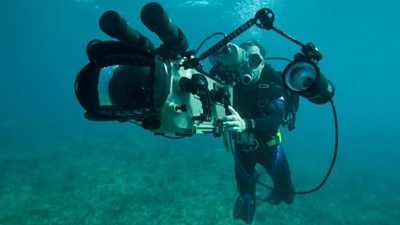 DivingA Guide to Scuba Diving and free Diving in both open water and pools.
DivingA Guide to Scuba Diving and free Diving in both open water and pools.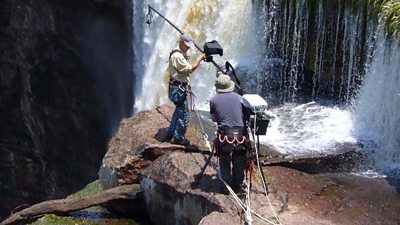 Work at Height: Rope Access TechniquesHow to protect people working in exposed positions
Work at Height: Rope Access TechniquesHow to protect people working in exposed positions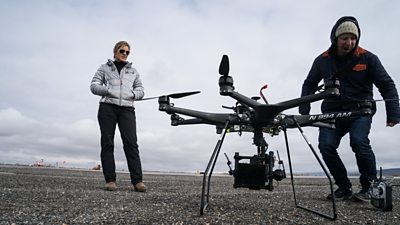 Unmanned aerial vehicles (UAV)Filming with UAVs / drones
Unmanned aerial vehicles (UAV)Filming with UAVs / drones Children and Young PeopleWorking with children and young people
Children and Young PeopleWorking with children and young people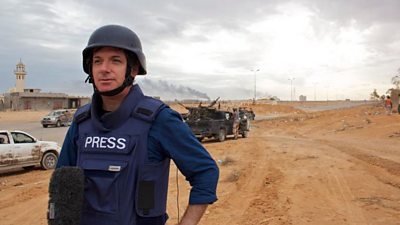 Safety Equipment StoresSafety Equipment Stores are located in London, W1T 3JL
Safety Equipment StoresSafety Equipment Stores are located in London, W1T 3JL
Sports topics
 Sport Safety GuideThis guide clearly and concisely sets out the key safety hazards and control measures for different production risks, activities and locations.
Sport Safety GuideThis guide clearly and concisely sets out the key safety hazards and control measures for different production risks, activities and locations.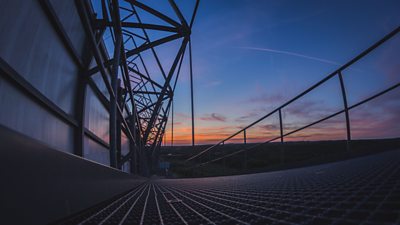 Gantries & High Level PlatformsA guide to working safely on high level gantries, walkways or platforms within stadia, arenas or other public venues
Gantries & High Level PlatformsA guide to working safely on high level gantries, walkways or platforms within stadia, arenas or other public venues Broadcast: Presentation and Linking PositionsPresentation or linking involving a studio facility; a permanent space or temporary installation.
Broadcast: Presentation and Linking PositionsPresentation or linking involving a studio facility; a permanent space or temporary installation. Crowds, Demonstrations and ProtestsGuidance on working with crowds, demonstrations and protests.
Crowds, Demonstrations and ProtestsGuidance on working with crowds, demonstrations and protests. Noise at WorkGuidance on controlling exposure to noise at work.
Noise at WorkGuidance on controlling exposure to noise at work. Sports Events: Recording or FilmingA Safety Guideline to the common risks and controls associated with filming and recording at sports events, including track- or pitch-side.
Sports Events: Recording or FilmingA Safety Guideline to the common risks and controls associated with filming and recording at sports events, including track- or pitch-side.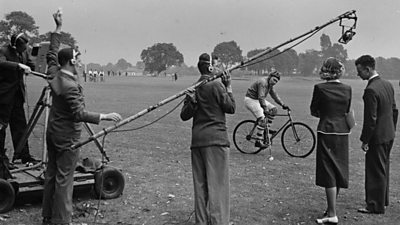 Vehicles Used in Sports CoverageA guide to the safe use and provision of vehicles used in sports coverage, including quad bikes and golf buggies.
Vehicles Used in Sports CoverageA guide to the safe use and provision of vehicles used in sports coverage, including quad bikes and golf buggies.
Stunt topics
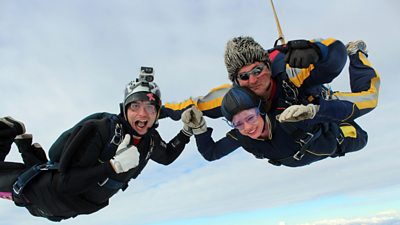 Adventure Activities & High Risk SportsSetting up and managing activities for talent and contributors.
Adventure Activities & High Risk SportsSetting up and managing activities for talent and contributors. Contributor Fitness to ParticipateA guide to the health of contributors performing physically demanding tasks.
Contributor Fitness to ParticipateA guide to the health of contributors performing physically demanding tasks.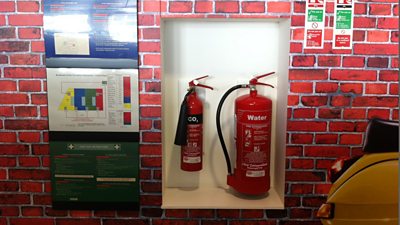 Fire Prevention PrinciplesA general guide to fire precaution measures.
Fire Prevention PrinciplesA general guide to fire precaution measures. Firearms and WeaponsA guide to firearms and weapons used in production, and visiting sites where firearms or weapons are used under strictly controlled conditions.
Firearms and WeaponsA guide to firearms and weapons used in production, and visiting sites where firearms or weapons are used under strictly controlled conditions.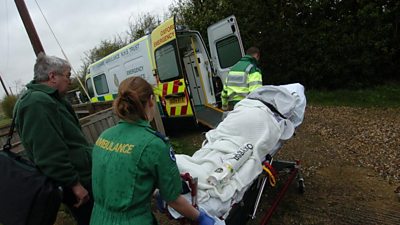 First Aid and Welfare on LocationProvision of first aid on location shoots.
First Aid and Welfare on LocationProvision of first aid on location shoots.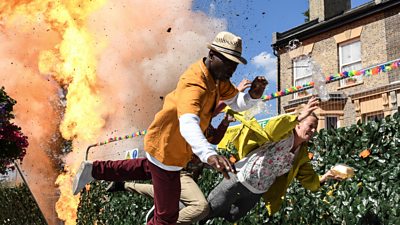 Special and Physical EffectsGuideline on how to arrange pyrotechnics, explosives, fire, smoke, rain or other effects for artistic purposes on productions.
Special and Physical EffectsGuideline on how to arrange pyrotechnics, explosives, fire, smoke, rain or other effects for artistic purposes on productions. Riggers: Selection ofCompetence criteria for riggers.
Riggers: Selection ofCompetence criteria for riggers. Working at Height: Rope Access TechniquesHow to protect people working in exposed positions.
Working at Height: Rope Access TechniquesHow to protect people working in exposed positions.
More from SSR
- Your platform to record accidents, risk assessments, assurance monitoring and inspections
- Safety Equipment StoresJust one number to call: 0844 800 8875
- 91�ȱ� Safety GuidelinesAn A-Z of 91�ȱ�'s Health and Safety Guidelines
- Safety Advice Line: 0370 411 0464 Email: safety@bbc.co.uk
Events guidance - key links:
- Exhibitions
- General Guidance
- Indoor Location Recce Checklist
- Outdoor Location Recce Checklist
- Major Incidents & Emergency Planning
- Marketing and Promotional
- Noise Exposure
- Planning and Management
- Responsibilities
- Responsibilities Form
- Laser Lighting Effects
- Strobe Lighting
- Temporary Stages and Rostra
Health topics - key links:
- (91�ȱ� network only)
- Contributors Fitness to Participate
- Display Screen Equipment (DSE)
- (91�ȱ� network only)
- First Aid and Welfare on Location
- International Travel - Risks & Health
- Manual Handling
- Mental Health: 91�ȱ�page
- (91�ȱ� network only)
- Personal Health and Wellbeing
- Pregnancy
- Psychological Trauma Support & Trauma Risk Management (TRiM)
- Tiredness and Fatigue
- Travel Health Contacts
91�ȱ� High Risk - key links:
- CBRN and Industrial Spills
- Covert Filming
- Crisis Management and Security Support
- Demonstrations, Protests and Crowds
- Disaster Coverage
- Door Stepping
- (91�ȱ� network only)
- (91�ȱ� network only)
- Public Order
- Safety Equipment Stores
91�ȱ� Journalism - key links:
91�ȱ� Productions - key links:
- Aerial Filming and Airfields
- Animals: Displaying and handling for performance
- Boats: Working on
- Children and Young People
- Driving
- Electrical Equipment and Systems
- First Aid and Welfare on Location
- Food Safety (Cooking and Catering)
- Remote Location Working
- Roads and Streets: Working by
- Security of Productions on Location
- Stunts
- Tiredness and Fatigue
- Unmanned Aerial Systems (UAS aka Drones)
- Vehicles: Recording in, from and around
- Working at Height: Mobile Elevating Work Platforms
- Working at Height: Tower Scaffolds
- (91�ȱ� Network only)
91�ȱ� Security - key links:
91�ȱ� Sport - key links:
About this site
This site describes what the 91�ȱ� does in relation to managing its health, safety and security risks and is intended for those who work directly for the 91�ȱ�.
It is not intended to provide instruction or guidance on how third parties should manage their risks. The 91�ȱ� cannot be held liable for how this information is interpreted or used by third parties, nor provide any assurance that adopting it would provide any measure of legal compliance. More information
Some links on this site are only accessible when connected to the 91�ȱ� network


